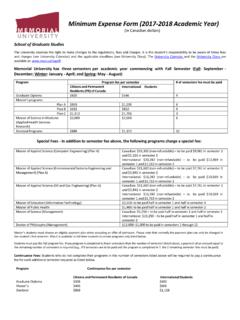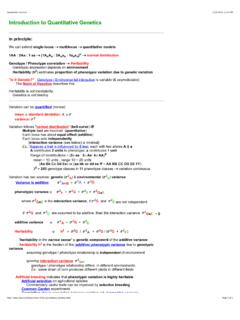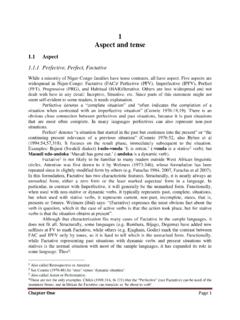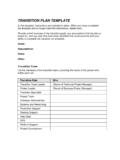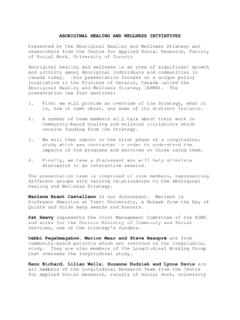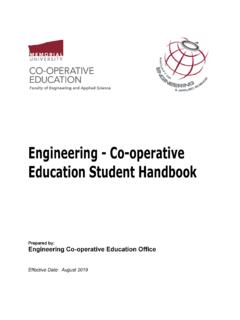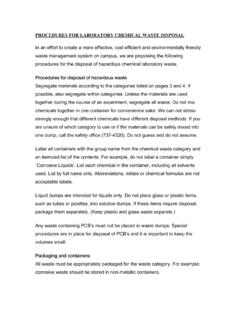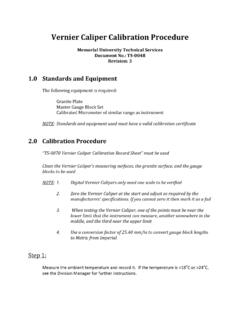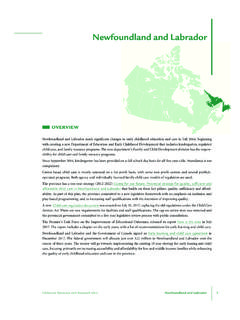Transcription of ASBESTOS ASSESSMENT R. Gushue Hall Memorial University …
1 Project #: 13916 ASBESTOS ASSESSMENT R. Gushue Hall Memorial University of newfoundland St. John s, NL Prepared for: Sheila Miller Director, Department of Health and Safety Memorial University of newfoundland 208 Elizabeth Avenue St. John s, NL A1B 1T5 Prepared by: 151 Crosbie Rd. St. John s NL, A1B 4B4 Tel: (709) 754-4146 Fax: (709) 754-4194 August 2011 EXECUTIVE SUMMARY ALL-TECH Environmental Services Limited conducted an ASBESTOS ASSESSMENT at R. Gushue Hall, located at Memorial University of newfoundland (MUN), St. John s, NL. The objective of the ASSESSMENT was to determine the presence of ASBESTOS containing materials throughout the building. It was determined that: Eight (8) of the twenty-five (25) suspect ASBESTOS samples collected contained ASBESTOS greater than 1%.
2 ( newfoundland and labrador Regulation 111/98, ASBESTOS Abatement regulations , 1998 under the Occupational Health and Safety Act.) Pipe fitting insulation was sampled and found to contain 40% Chrysotile ASBESTOS . Tank insulation was sampled and found to contain 40% Chrysotile ASBESTOS . 9 x 9 vinyl floor tiles sampled from various locations were found to contain between 3 8% Chrysotile ASBESTOS . Transite panels were sampled and found to contain 45% Chrysotile ASBESTOS . Light fixture heat shields were sampled and found to contain 25 - 35% Chrysotile ASBESTOS . This summary is not to be used alone. This report must be reviewed in its entirety. Thank you, _____ Carla Noseworthy, Environmental Consultant ALL-TECH Environmental Services Limited TABLE OF CONTENTS INTRODUCTION.
3 1 ASBESTOS ASSESSMENT .. 1 Scope of Work .. 1 Methodology .. 2 Applicable Standards .. 2 Survey Findings .. 3 Recommendations .. 8 DISCLAIMER .. 9 LIST OF APPENDICES: APPENDIX I ----- Photographs APPENDIX II ------ Laboratory ASBESTOS Results APPENDIX III ----- ASBESTOS Building Survey Report APPENDIX IV ----- Floor Plans Showing Sampling Locations ASBESTOS ASSESSMENT R. Gushue Hall Project #: 13916 1 INTRODUCTION ALL-TECH Environmental Services Limited was contracted by Sheila Miller, Director Department of Health and Safety, Memorial University of newfoundland (MUN), to complete an ASBESTOS ASSESSMENT at R. Gushue Hall located at Memorial University of newfoundland , St. John s, NL.
4 The purpose of the ASSESSMENT was to identify the presence of ASBESTOS containing materials located throughout the building. The ASSESSMENT was conducted in August 2011. ASBESTOS ASSESSMENT ASBESTOS is a general term which is used to describe a group of fibrous mineral silicates. The six major types of ASBESTOS are; chrysotile (white ASBESTOS ), crocidolite (blue), amosite (brown), anthophyllite, tremolite and actinolite. Commercially, ASBESTOS has been used widely in such applications as fireproofing, textiles, friction products, reinforcing materials ( cement pipes, sheets) and insulation (both thermal and acoustic). ASBESTOS materials can be found in one of two forms; friable or non-friable.
5 Friable ASBESTOS material refers to material that when dry, can be crumbled, pulverized or reduced to a powder by hand pressure thus releasing fibers into the air. This type of ASBESTOS material is hazardous due to its potential to become airborne if damaged or disturbed. Friable ASBESTOS building products used in the past were sprayed acoustic & fire protection insulations, ceiling/wall finishes, drywall joint compounds, mechanical insulations on pipes, tanks, boilers, vessels, etc. Non-friable building products used in the past were vinyl floor tiles, gaskets, transite panels, and transite shingles. Non-friable materials if handled improperly during removal or renovations, such as cutting transite panels with an electrical tool, can cause high fiber release.
6 Also, non-friable ASBESTOS products can become friable if damaged through years of aging (water damage, general deterioration of materials, etc.). ASBESTOS containing materials (ACM) can be properly managed and left in place depending on their location, condition, and friability. Non-friable materials receive less attention than friable materials due to the fact that the ASBESTOS fibers in the non-friable material are bound or held tightly together, reducing the chance of fibers becoming airborne. This makes the non-friable products safer and easier to manage. The mere presence of ASBESTOS in building materials is not necessarily a problem; however, inhaling ASBESTOS fibers can cause associated health problems. The hazards of ASBESTOS exposure are directly related to the degree to which fibers are released (become airborne).
7 Intact and undisturbed ASBESTOS do not pose a health risk. Scope of Work Representative suspect ASBESTOS containing materials were sampled from wall finishes, various types of flooring, and exterior finishes located throughout the building. ASBESTOS ASSESSMENT R. Gushue Hall Project #: 13916 2 The ASBESTOS ASSESSMENT involved a visual investigation of representative building structures, wall & ceiling finishes, and flooring for the presence of ASBESTOS materials. If these materials were suspected to contain ASBESTOS , a bulk sample was collected of the representative material. It should be noted that ASBESTOS containing materials such as piping straight runs & fittings may be present behind existing drywall walls, ceilings, columns, shafts, etc.
8 Since no destructive testing was performed during this ASSESSMENT , additional care should be taken during renovations/demolition to ensure that no ASBESTOS containing materials are to be disturbed. Methodology A total of twenty-five (25) suspect ASBESTOS bulk samples were collected from the building. Representative suspect ASBESTOS bulk material samples from floors, wall and ceiling finishes, ceiling tiles, pipe fitting insulation, tank insulation, cement boards and light fixture heat shields were carefully collected and placed into labeled sealable plastic bags and transported to the EMSL Analytical Inc. in New Jersey, USA, for Polarized Light Microscopy/ Dispersion Staining (PLM/DS) analysis. The EPA test method for bulk analysis (EPA/600/R-93/116) states in paragraph that the detection limit for visual estimation is a function of the quantity of the sample analyzed, the nature of matrix interference, sample preparation, and fiber size and distribution.
9 ASBESTOS may be detected in concentrations of less than one percent by area if sufficient material is analyzed. Samples may contain fibers too small to be resolved by PLM (< m in diameter) so detection of those fibers by this method may not be possible. Applicable Standards The province defines ASBESTOS material as material containing greater than 1% ASBESTOS by dry weight. Materials identified as ACM must be managed, handled and disposed of as per the newfoundland and labrador Regulation 111/98, ASBESTOS Abatement regulations , 1998 under the Occupational Health and Safety Act ( 98-730). Also, the Province of newfoundland and labrador have set standards for exposure to airborne ASBESTOS fibres to as low as is reasonably achievable (ALARA) but in any case shall not exceed Threshold Limit Values (TLVs) as published by the American Conference of Governmental Industrial Hygienists (ACGIH) and are primarily used for the occupational exposure to employees and workers who from day to day come in contact with ASBESTOS .
10 ACGIH guidelines state the airborne ASBESTOS limit as follows: - ASBESTOS (all forms) fibres per cubic centimetre (f/cc) as determined by air sampling following the NIOSH 7400 ASBESTOS and Other Fibres by Phase Contrast Microscopy. ASBESTOS ASSESSMENT R. Gushue Hall Project #: 13916 3 The newfoundland ASBESTOS Abatement regulations 111/98 requires that all employers, building owners and principal contractors follow this Regulation when handling or using ASBESTOS in their workplace. This Regulation applies to every workplace covered under the Occupational Health and Safety Legislation where ASBESTOS or materials containing ASBESTOS , is likely to be handled, dealt with, disturbed or removed and includes every project, project owner, contractor, employer and employee engaged in or on the project.
